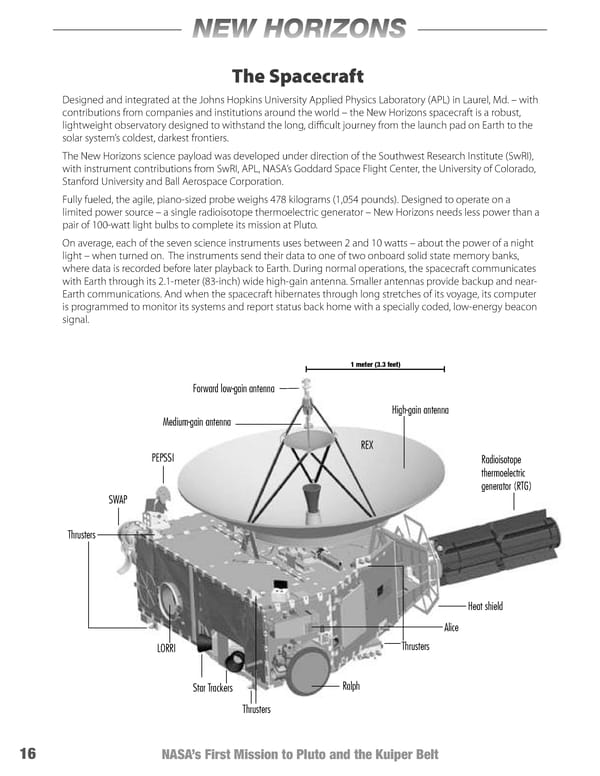NEW HORIZONS The Spacecraft Designed and integrated at the Johns Hopkins University Applied Physics Laboratory (APL) in Laurel, Md. – with contributions from companies and institutions around the world – the New Horizons spacecraft is a robust, lightweight observatory designed to withstand the long, difficult journey from the launch pad on Earth to the solar system’s coldest, darkest frontiers. The New Horizons science payload was developed under direction of the Southwest Research Institute (SwRI), with instrument contributions from SwRI, APL, NASA’s Goddard Space Flight Center, the University of Colorado, Stanford University and Ball Aerospace Corporation. Fully fueled, the agile, piano-sized probe weighs 478 kilograms (1,054 pounds). Designed to operate on a limited power source – a single radioisotope thermoelectric generator – New Horizons needs less power than a pair of 100-watt light bulbs to complete its mission at Pluto. On average, each of the seven science instruments uses between 2 and 10 watts – about the power of a night light – when turned on. The instruments send their data to one of two onboard solid state memory banks, where data is recorded before later playback to Earth. During normal operations, the spacecraft communicates with Earth through its 2.1-meter (83-inch) wide high-gain antenna. Smaller antennas provide backup and near- Earth communications. And when the spacecraft hibernates through long stretches of its voyage, its computer is programmed to monitor its systems and report status back home with a specially coded, low-energy beacon signal. 1 meter (3.3 feet) Forward low-gain antenna High-gain antenna Medium-gain antenna REX PEPSSI Radioisotope thermoelectric generator (RTG) SWAP Thrusters Heat shield Alice LORRI Thrusters Star Trackers Ralph Thrusters 16 NASA’s First Mission to Pluto and the Kuiper Belt
 New Horizons Page 24 Page 26
New Horizons Page 24 Page 26